English
Be a reader.
Be a writer.
Be a communicator.
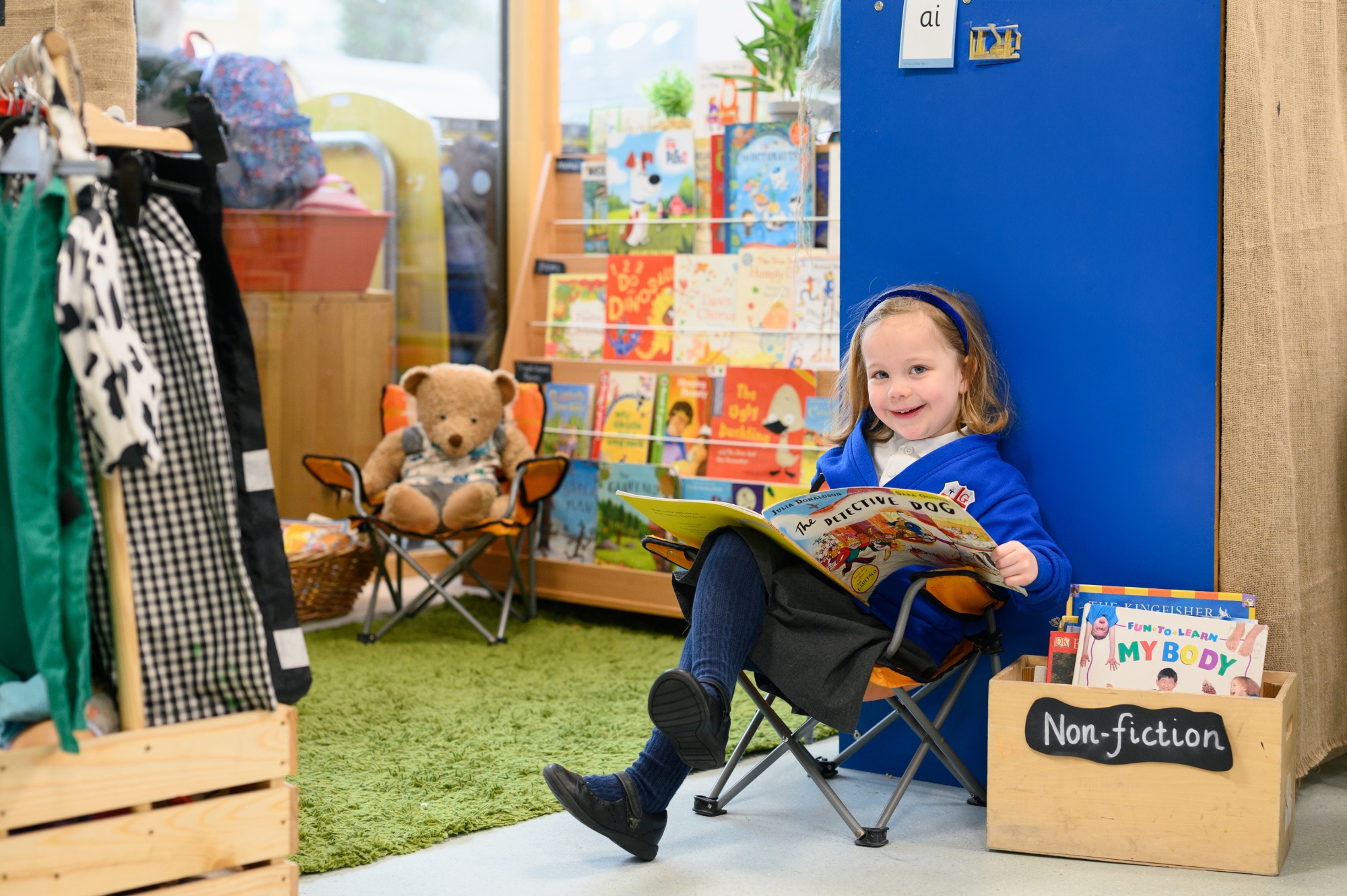
Our English Curriculum Vision Statement
Be a reader. Be a writer. Be a communicator.
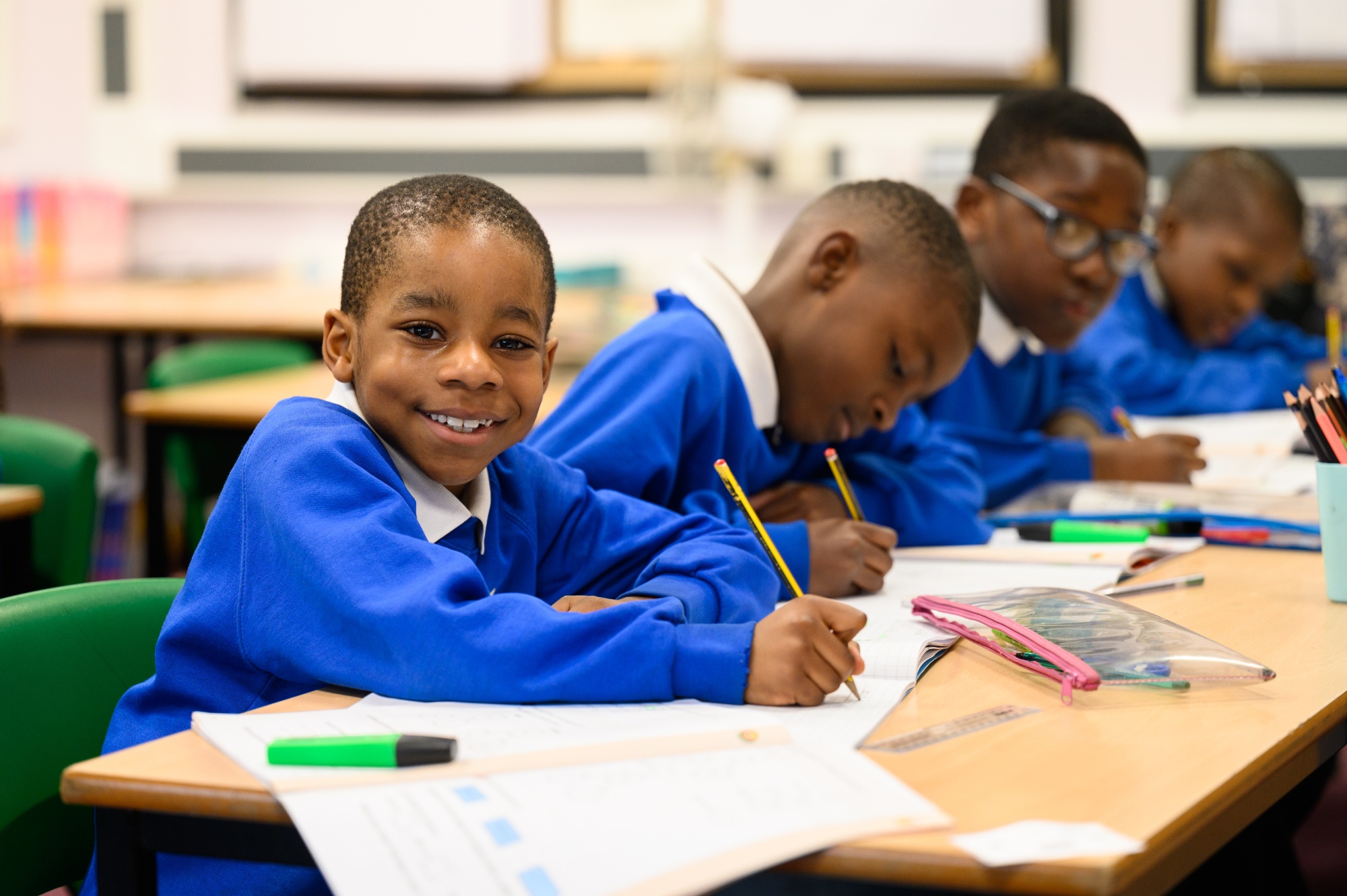
Intent
Our intent is to deliver the content outlined in the reading, writing, spoken language and communication programmes of study within the English national curriculum, including spelling, vocabulary and grammar, and augmented with powerful knowledge carefully selected to build upon our pupils’ starting points of cultural capital.
To this end, we use the CUSP Literacy model curriculum. This is a knowledge-engaged progress model which clearly outlines the key knowledge and vocabulary for each stage of learning in sequence. It has been deliberately adapted in order for pupils to see themselves in the curriculum and prepare them for life in modern Britain.
Alongside this, we have fidelity to specialist schemes for phonics, handwriting and spelling, ensuring a clear, cumulative learning sequence for our pupils.
Implementation
All areas of our curriculum are implemented using ten principles of effective instruction outlined in our Teaching Touchstones, which work in symbiosis with the Gradual Release Towards Independence model for teaching.
In teaching English in all its elements, we are passionate about implementing our curriculum through a high-quality Literature spine because we believe that becoming a great reader, writer and communicator is built on the foundations laid by acclaimed authors, poets, playwrights and writers in many spheres.
Strong foundations
A love of literature begins in our Early Years where our children are given access to a wide range of high-quality reading materials to ignite their interest. Our systematic synthetic phonics programme ‘Little Wandle Letters and Sounds Revised’ provides the building blocks for reading and writing as the children link letters to sounds and begin to blend and segment words. St George’s EYFS literacy curriculum is implemented through planned, purposeful play and through a mix of adult-led and child-initiated activity, with a focus on developing spoken language and vocabulary.
Communication, speech and language
We place a high priority on language and communication development since it impacts children’s learning across the whole curriculum and in children’s wider lives – cognitively, socially and linguistically. We ensure that the development of confidence and competence in spoken language is integrated into the teaching of reading and writing and discussion around books happens every day during reading lessons and story times. Our curriculum prioritises explicit vocabulary teaching to encourage comprehension and creativity in our young readers and writers, ensuring that they are equipped to explain their understanding of books and other reading, and to prepare their ideas before they write. The importance of oracy is also demonstrated through teaching the conventions for discussion and debate as well as opportunities for pupils to engage in and reflect on drama and the art of theatre. Our children have a voice and we teach them how to use it effectively.
Reading
Children at St George’s are encouraged to read widely across both fiction and non-fiction to develop their knowledge of themselves and the world in which they live, to establish an appreciation and love of reading, and to gain knowledge across the curriculum. Our core texts for reading fuel pupils’ imagination and open up a treasury of wonder and joy for curious young minds. They showcase the best of great authors through time as well as representing our diverse, multinational community. The CLUSP curriculum we use aligns our learning in Science, Art, History and Geography with our reading, which encourages connections between subjects and provides meaningful context. This knowledge-rich curriculum works in tandem with our phonics programme in Key Stage 1, and children move from individual to small group to whole class reading as they progress through the school. We are ambitious for all children without exception to be readers!
Writing
A love of reading feeds into competence and creativity in writing. As part of our Literature Spine, children delve into and learn to write fiction, non-fiction and poetry, from classic works to modern favourites. We begin teach writing composition by exemplifying elements for success in a model text. Core skills such as grammar and punctuation are deliberately practised and guided by the teacher to ensure they are embedded. Carefully sequenced writing lessons teach children how to plan, revise and evaluate their writing. Through forming, articulating and communicating ideas, and then organising them coherently, children are able to write at length and for a variety of different purposes and audiences as well as in a range of styles. As vocabulary increases, teachers show pupils how to understand the relationships between words and how to understand nuances in meaning. We teach daily handwriting explicitly to enable our children to develop fluent, legible writing that will serve them in English lessons and beyond. Spelling rules and conventions, alongside the statutory words lists are taught explicitly in stand-alone sessions and constantly referred to across the curriculum.
Impact
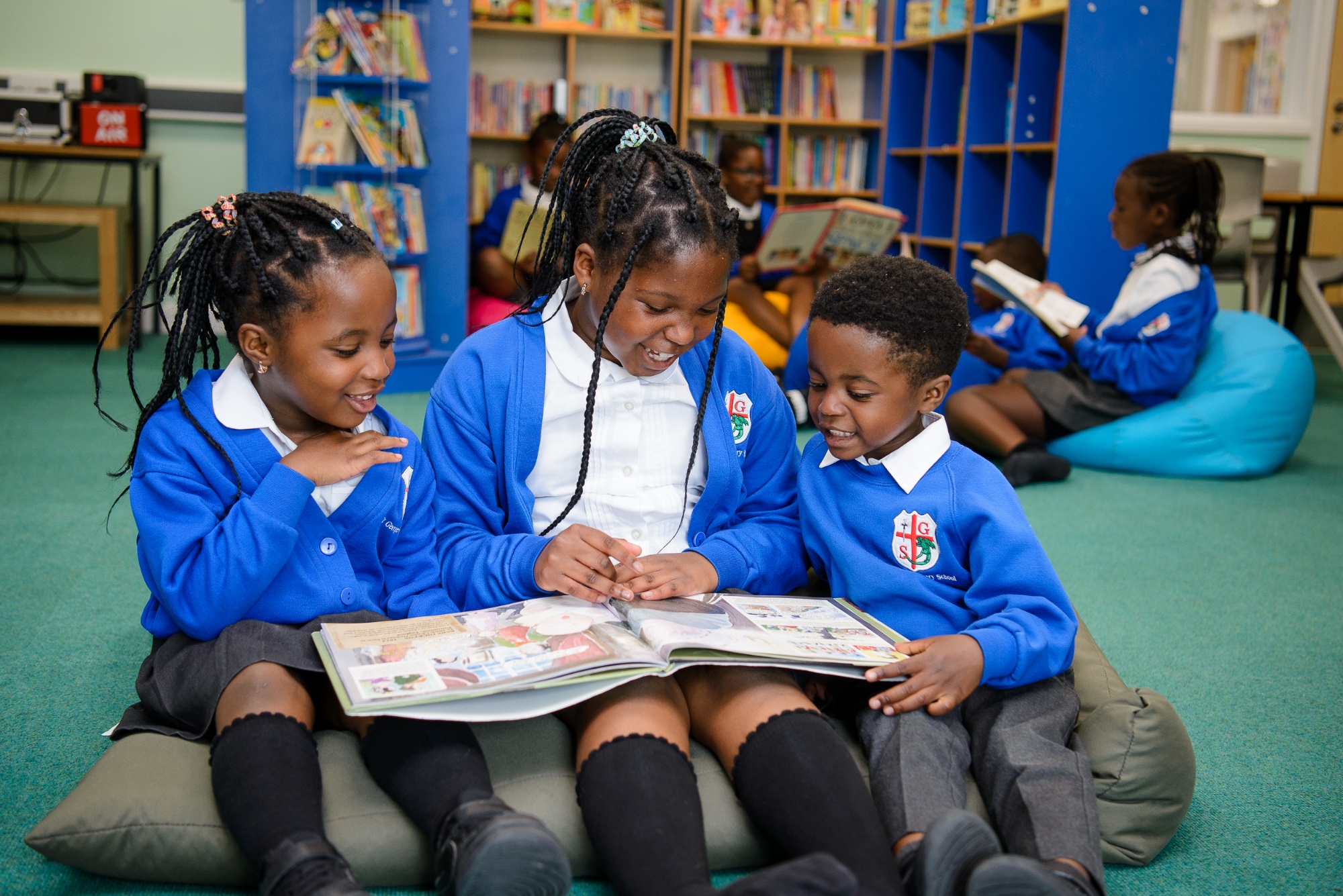
The impact of our curriculum is directly aligned to our whole school vision and culture statements, as well as the science vision statement and the aims and purposes set out in the national curriculum.
We say to our pupils:
Be a reader
This means we want our pupils to:
Be brave:
-
To engage with new texts with curiosity and develop critical listening skills.
-
To challenge themselves to read a wide range of stories, poems and non-fiction texts.
-
To read aloud with confidence and be able to recite poetry.
Be great:
-
To be able to decode accurately to unlock words by progressing through our Letter sand Sounds Revised phonics programme.
-
To be fluent, confident readers and read with prosody and expression.
-
To answer retrieval and inference questions effectively to demonstrate comprehension.
Be you:
-
To self-select reading material from our inviting book corners.
-
To make frequent use of our school library and local library partners.
-
To see themselves represented in literature and reading materials.
-
To share opinions on books and themes and to develop taste in literature.
-
To develop an independence in reading and to enjoy reading for pleasure.
Be a writer
This means we want our pupils to:
Be brave:
-
To write creatively and powerfully, using language to convey emotion and tone.
-
To be prepared to use writing for advocacy to address issues relating to their futures.
-
To be ambitious writers who challenge themselves to improve their own writing, taking on feedback.
Be great:
-
To be able to apply phonic knowledge, segmenting words to spell.
-
To spell words with increasing accuracy, supported by our sequential spelling programme.
-
To write with grammatical accuracy, using the conventions of standard English.
-
To use punctuation for clarity and effect.
-
To have a broad and rich vocabulary and be able to apply new and ambitious words in writing.
Be you:
-
To express themselves in a clear and appropriate way in writing.
-
To be imaginative and develop creative writing styles such as storytelling, poetry and descriptions.
-
To write for pleasure and as a method of reflection and expression.
-
To check, edit and improve their own writing, re-writing drafts to develop a final copy.
Be a communicator
This means we want our pupils to:
Be brave:
-
To speak with confidence and clarity, using full sentences much of the time.
-
To perform in drama with expression and confidence.
-
To engage in debates and discussions on a variety of themes.
-
To be brave enough to communicate and listen in situations outside of their every day experience.
Be great:
-
To articulate all 44+ phonemes of the English language and to be given support for this skill where necessary.
-
To be able to use tone and register for formal and informal situations.
-
To know a repertoire of poems and rhymes by heart and be able to recite.
-
To orally rehearse sentences for writing in full sentences.
Be you:
-
To have their voices heard and to listen well to others.
-
To use language for social as well as academic uses.
-
To share opinions thoughtfully and respectfully, including about texts they have read.
-
To be confident communicators in their home languages and develop a love of languages and communication.
Early reading and our Systematic Synthetic Phonics Programme
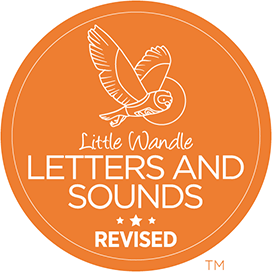 At St. George's, we follow the Little Wandle Letters and Sounds Revised Systematic Synthetic Phonics Programme.
At St. George's, we follow the Little Wandle Letters and Sounds Revised Systematic Synthetic Phonics Programme.
Little Wandle Letters and Sounds Revised has been developed by Wandle and Little Sutton English Hubs and taken forward by Little Sutton Primary School and Wandle Learning Trust in partnership with other phonics and early reading experts.
We implement this SSP through their seven principles of effective practice, which are:
- Direct teaching in frequent, short bursts
- Consistency of approach
- Secure, systematic progression in phonics learning
- Maintaining pace of learning
- Providing repeated practice
- Application of phonics using matched decodable books
- Early identification of children at risk of falling behind, linked to the provision of effective keep-up support.
We begin the process of early reading in Nursery, when pupils are exposed to Phase 1, which is then cumulatively built upon across Reception and Year One.
When pupils are ready, they move on to the Year Two spelling scheme. Due to the pandemic, we have adapted when pupils learn each phase, to ensure the most secure of foundations are built before moving on.
Across Reception, Year One and Year Two, pupils are given same day one to one or group interventions by the class teacher. For pupils who have not passed the screening test in Year Three, we have targetted interventions using fully decodable books matching the Little Wandle scheme. In the academic year of 2021-22, we have also timetabled daily practice of Phase Five and beyond for lower Key Stage Two, to ensure pupils are fluent and ready to access whole class reading as soon as possible.
Support for Parents
Please click here to visit the Little Wandle parents section of their website. Here you will find advice on how we teach early reading and how you can further support at home.
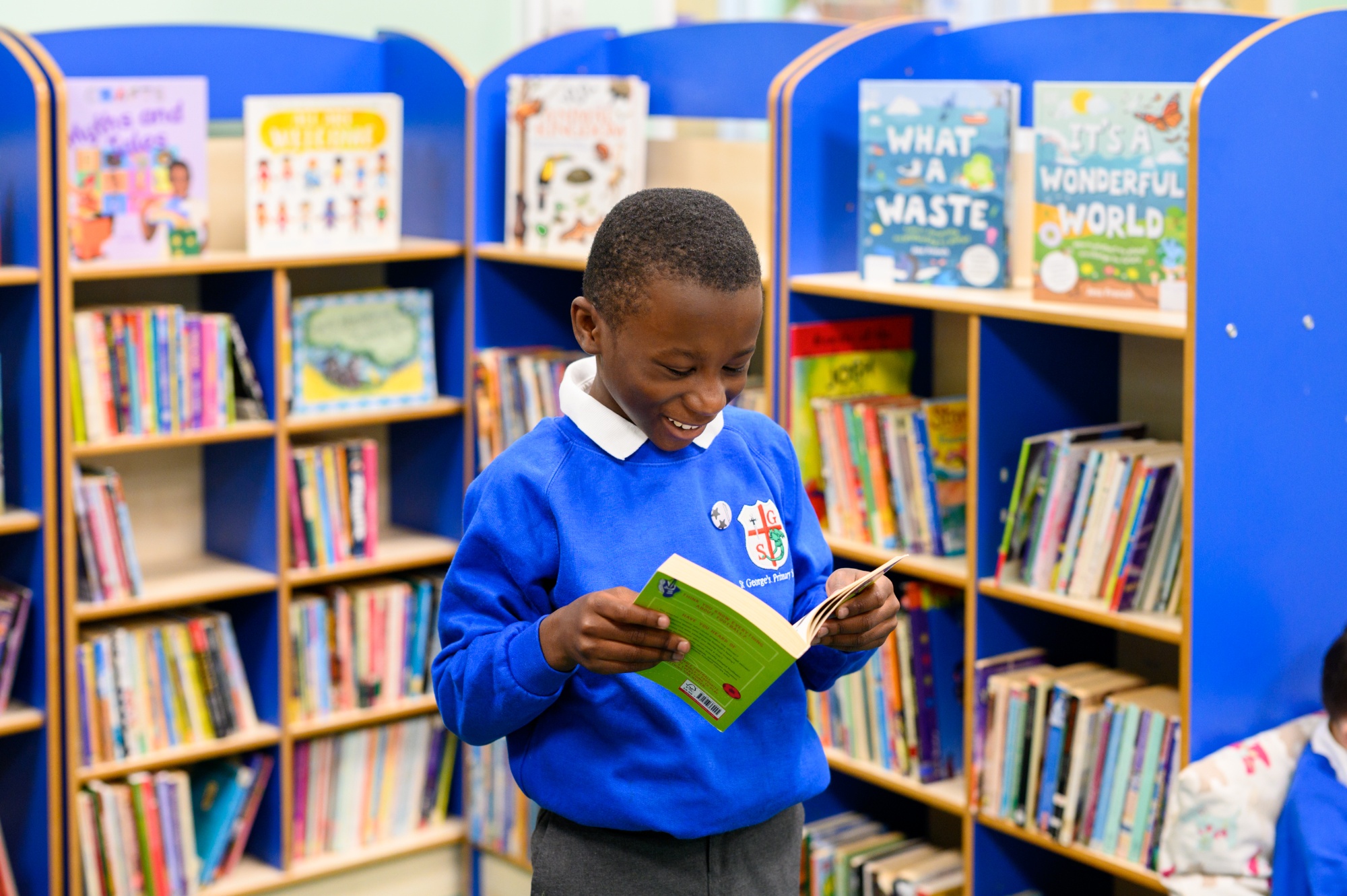
Our work with the English Hub

In September 2018, the DfE officially launched the English Hubs project. 34 English Hubs were appointed across England to support schools to deliver excellent early language and reading in EYFS and Key Stage 1, including age-appropriate phonics and essential next steps. The Wandle English Hub at Chesterton Primary School is one of those Hubs and St. George's have worked closely with them since January 2021.
St. George's have utilised the English Hub to develop this priority area identified by the Dfe:
- Age-appropriate phonics provision including encouraging best practice in systematic synthetic phonics teaching. Best practice includes:
- Encouraging fidelity to a single systematic synthetic phonics programme;
- Supporting the effective use of decodable books in the early stages of learning to read, as a way of establishing phonics decoding;
- Supporting effective practice of formative assessment in relation to phonics/early reading.
The English Hub have so far worked with us to undertake a phonics audit and choose a fully validated SSP. They have also helped us secure funding to ensure we have a fully decodable library of books aligned to our SSP.
In the academic year of 2021-22, we will be a part of Chesterton's English Hub Partner Schools Programme.
As a Partner School, we will receive in-school support from expert Literacy Specialists, who have been fully trained on all systematic, synthetic phonic programmes and have knowledge of the most up-to-date DfE and Ofsted requirements.
We are proud to be an outward facing school who works with Dfe accredited partners to secure funding, specialist advice and improve our pupils' outcomes for reading.
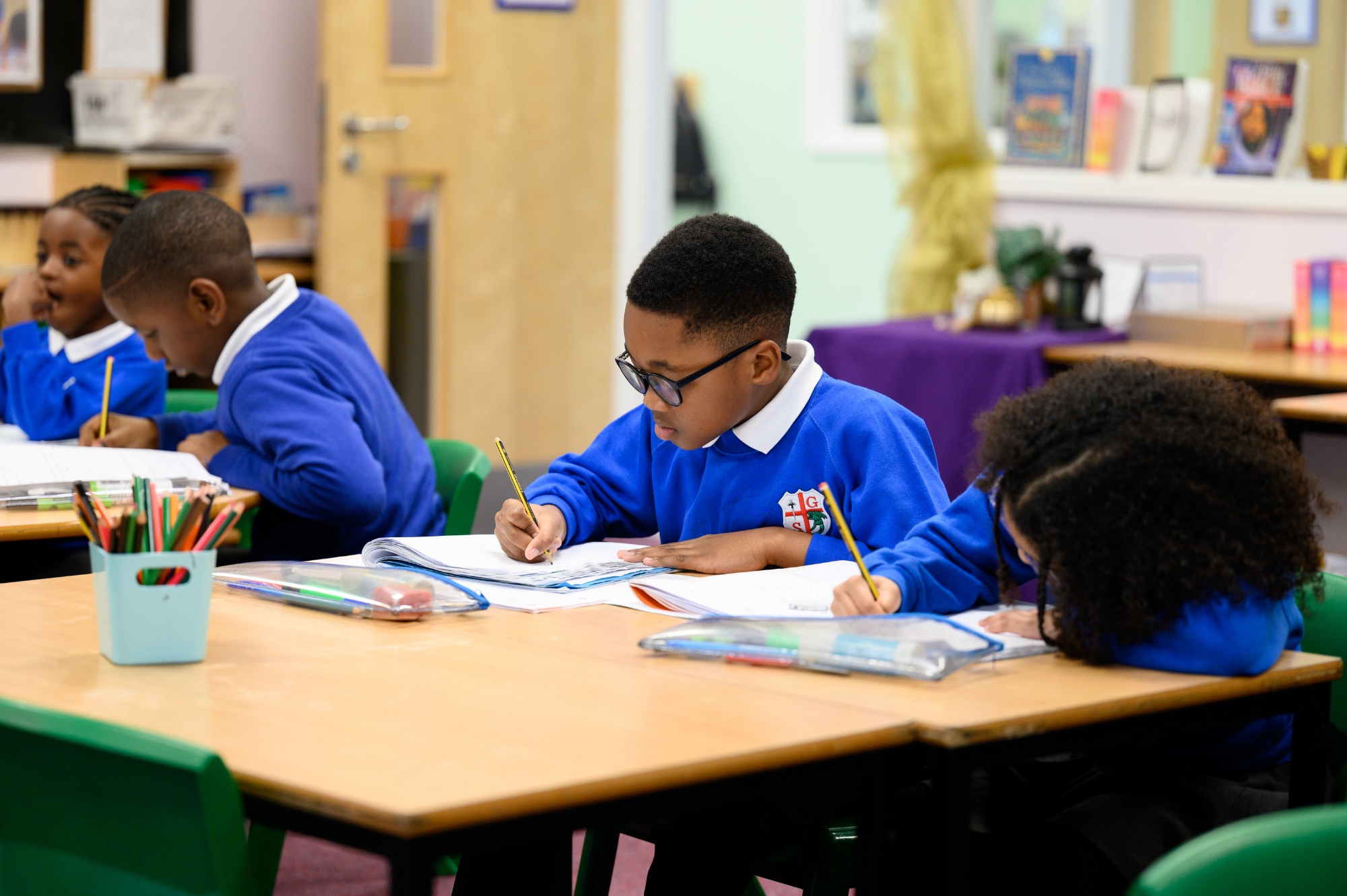
CUSP Whole Class Reading Curriculum

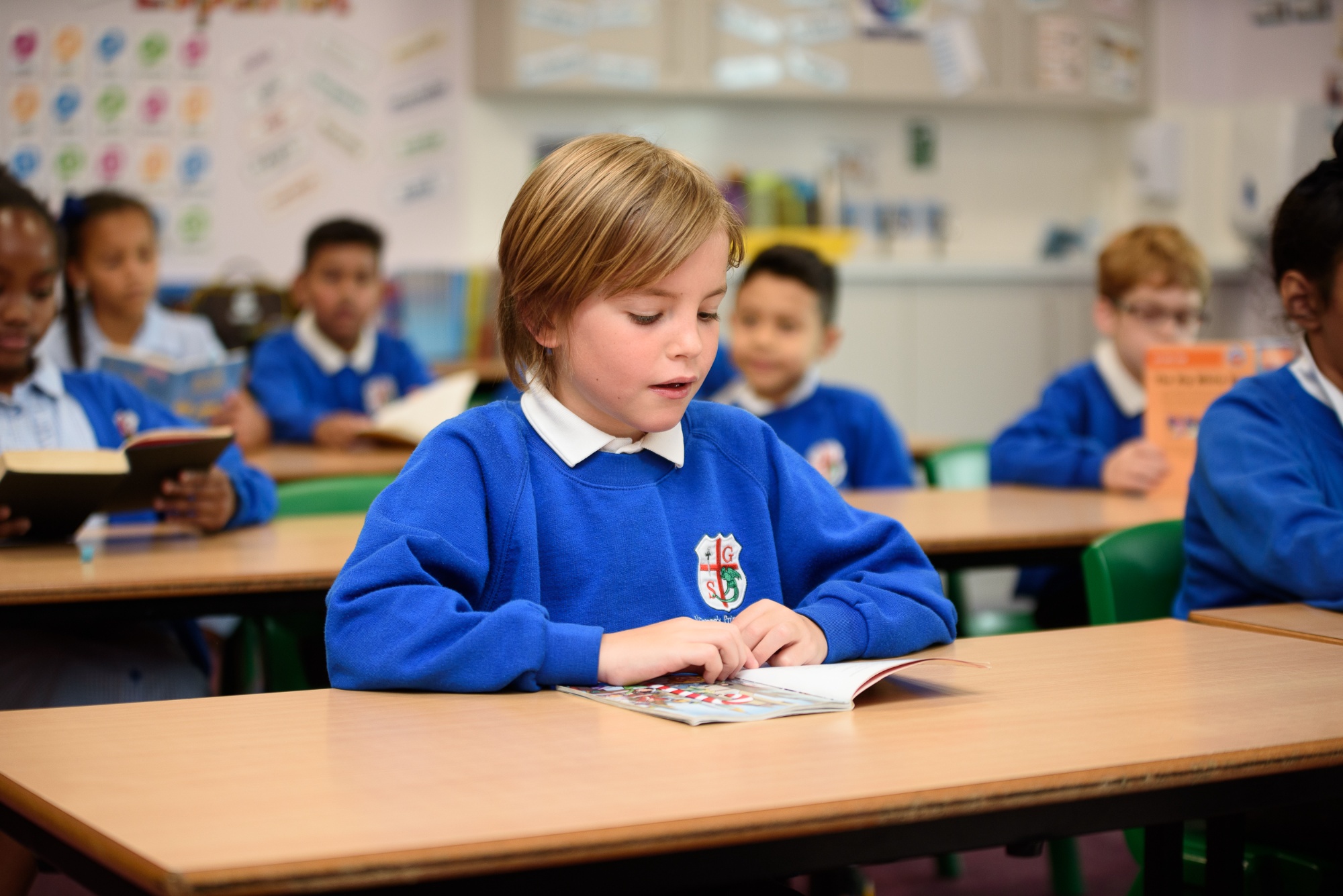
Beyond our SSP, we implement explicit fluency, vocabulary and strategy instruction through whole class reading of a deep, rich and ambitious reading spine.
We follow the Curriculum with Unity Partnership (CUSP) reading curriculum, which has deliberately chosen texts with:
- Diverse representation
- Relevant social issues
- Big ethical questions
- Moral dilemmas
- Joyful literary experiences
- Aspirational themes and vocabulary
In each reading module, pupils and teachers read and engage with both the core text and bespoke supplementary texts to ensure pupils are exposed to a range of genres and disciplinary reading.
From Years 1 to 6, these sessions apply the following structure:
- Explicit vocabulary instruction of tier 2 and tier 3 vocabulary.
- Teacher, paired, individual, or whole class reading of the text, using specific strategies to develop fluency, prosody and comprehension.
- Teacher explanation of theme, skill or knowledge to be learned.
- Teacher modelled example.
- Teacher/pupil guided example.
- Pupil's individual task and challenge.
- Live feedback, usually under the visualiser.
Each session structure is guided through session specific task strips. Task design on these strips promotes deep thinking and reasoning. A range of question types promote conceptual fluency and there is a careful architecture of response frameworks.
See the attachment below to see some of the inspirational texts which form part of our literature spine.
For more information, please visit the CUSP website, here.
CUSP Writing Curriculum

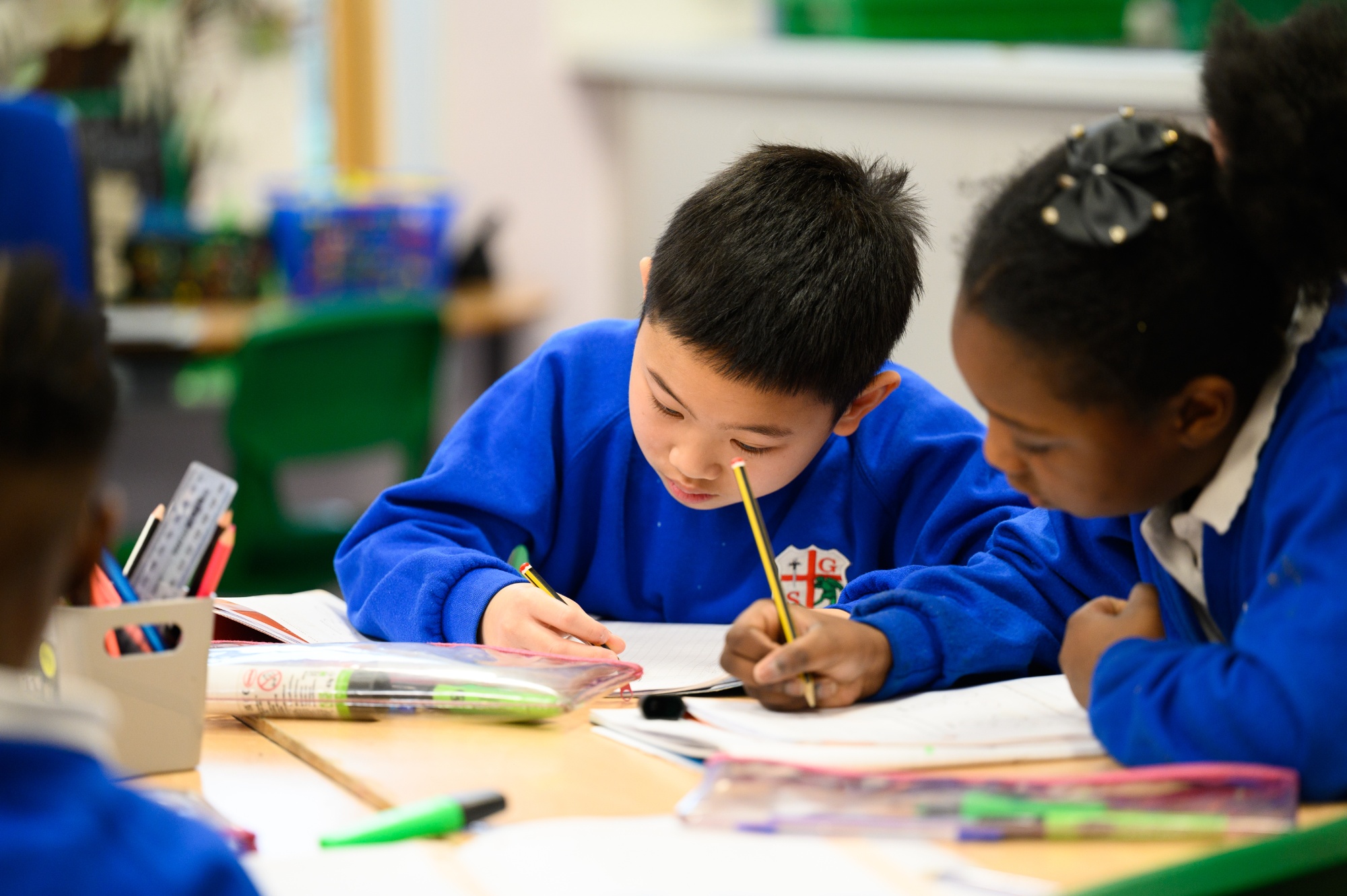
At St. George's, we believe in the connectedness of vocabulary instruction, reading, transcriptional fluency and subject specific knowledge to writing. If pupils are able to draw upon a bank of words, knowledge and writing conventions, cognitive space is left for pupils to focus on the content of their writing.
This is why we have chosen to implement the Curriculum with Unity School Partnership (CUSP) curriculum for writing.
CUSP writing often uses other CUSP topics (our wider curriculum sequences of learning) as a stimulus for writing, meaning new vocabulary and knowledge is recycled and reused in writing sessions, meaning sessions can have an explicit grammar or text convention focus.
Each writing cycle takes place over a two-week module, which follows this process:
- Identify the context, purpose and audience for writing.
- Immerse pupils in quality models.
- Use worked examples to instruct and model key conventions and grammatical objectives, with opportunities for deliberate practice.
- Create a clear outline of the structure.
- Insert your own content.
- Internalise your text and its components.
- Record your writing, reading it aloud regularly.
- Edit your writing as you go for meaning secretarially for impact.
- Evaluate your writing against its intended purpose.
Each writing cycle has its own example of a high quality model text which includes age-related grammatical and vocabulary choices, as well as a knowledge strip which breaks down the conventions which will be internalised throughout the module.
Similar text types are revisited within year groups and across key stages so pupils have the opportunity to improve their knowledge over time. We have adapted the long term sequence for writing and also included picture book stimuli to support pupils' planning of ideas. Our long-term writing sequence can be found below.
For more information, please visit the CUSP website, here.
To support children's understanding of sentence structure, we include regular 'Sentence Blocks' practice. Children are taught the ingredients of a one-clause sentence building up to a multi-clause sentence, and how these can be manipulated to create varied sentences. Coloured rectangles or 'blocks' are used to represent different clauses. Children use these blocks to rearrange sentences, identify clauses in texts and write different types of sentence. We have devised a 'Sentence Blocks' progression map which shows the types of sentences children learn in different years, which can be found here.
Writing is assessed using our writing progress model, which outlines the key aspects to be included in writing in order for a child to be meeting age related expectations. The writing progress model is attached below. This is supplemented with national assessment points using comparative judgement using the nomoremarking website, which can be viewed here.
Direct Teaching of Spelling
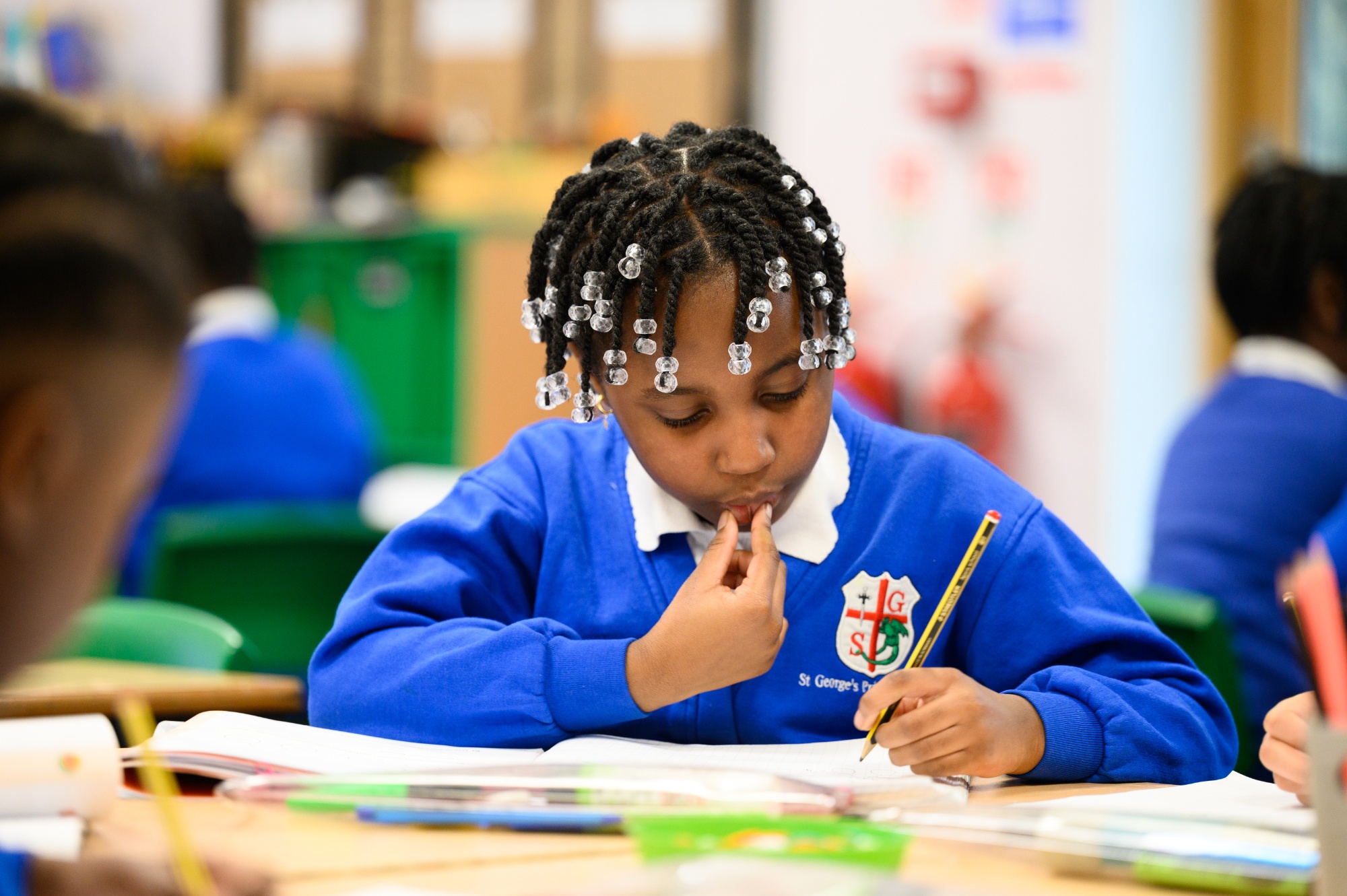
To develop our pupils' fluency in spelling, we implement the CUSP spelling curriculum, which is comprehensive, systematic and progressive. The underpinning principles are:
- Teaching of spelling concepts
- Pattern spotting
- High volume of engagement with print
- Systematic revisiting
- Additional time given to complex concepts with common errors
- Zoom in on the composition of words
- Spelling and word meaning are intrinsically linked
- CUSP principles of direct instruction
Classes have two discrete spelling sessions each week and a third session focusing on spelling within their writing in a writing lesson. The long term sequence of CUSP spelling is attached below, showing which concepts are taught in each year group.
Fluency in handwriting
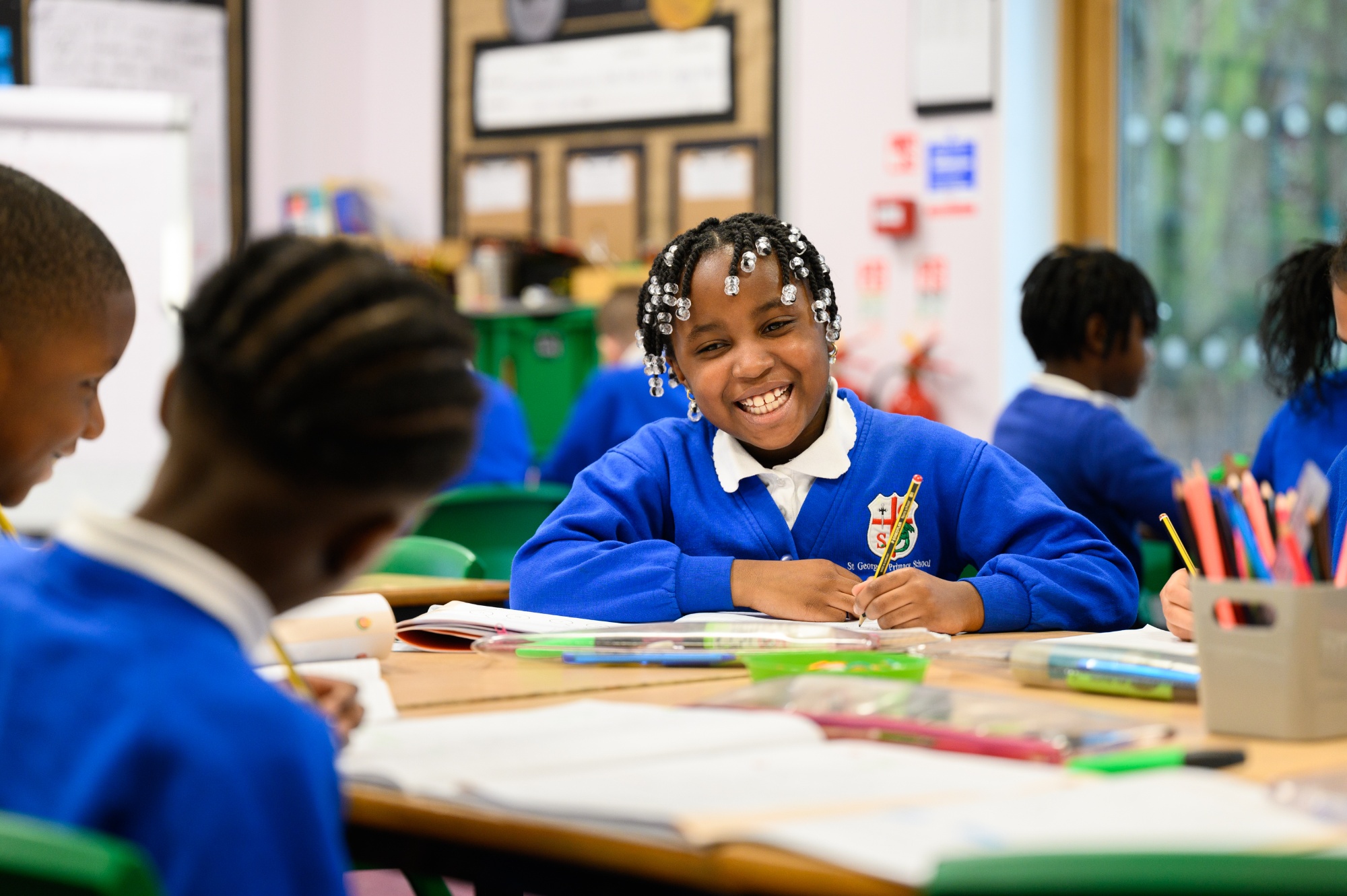
At St. George's, we believe that fluent, legible handwriting is incredibly important.
Fluency of handwriting frees up cognitive load for the pupil when writing, as they do not have to preoccupy working memory with transcription. Fluency of handwriting is not just a basic skill, it is freeing and empowering. Therefore, we place value on it.
Likewise, neat, legible handwriting frees up cognitive load for the reader as less stress is placed on working memory on deciphering. The reader can concentrate on the magnificent language and grammatical choices our pupils are capable of making when handwriting is neat.
At St. George's, we practice handwriting in explicit handwriting sessions three times a week from Year 1 upwards, using the agreed script from the attached handwriting progression documents.
This teaches letter formation and then specific joins. This means that our handwriting policy fully links with guidance from the Dfe over phonics schemes not using pre-cursive script.
Of course, handwriting is modelled across the curriculum, especially in modelled writing and phonics sessions. Our handwriting scripts are displayed in all classes so that teachers and children can refer to them to support progress.
To support children's progress in handwriting, we award badges in our Celebration Worship. All children have the attached handwriting progress sheets in their writing books so they can track their own progress and teachers can give specific next steps, so they can earn their next badge. Children start on Handwriting Progress 1 and move to Handwriting Progress 2 once they learn to join.
